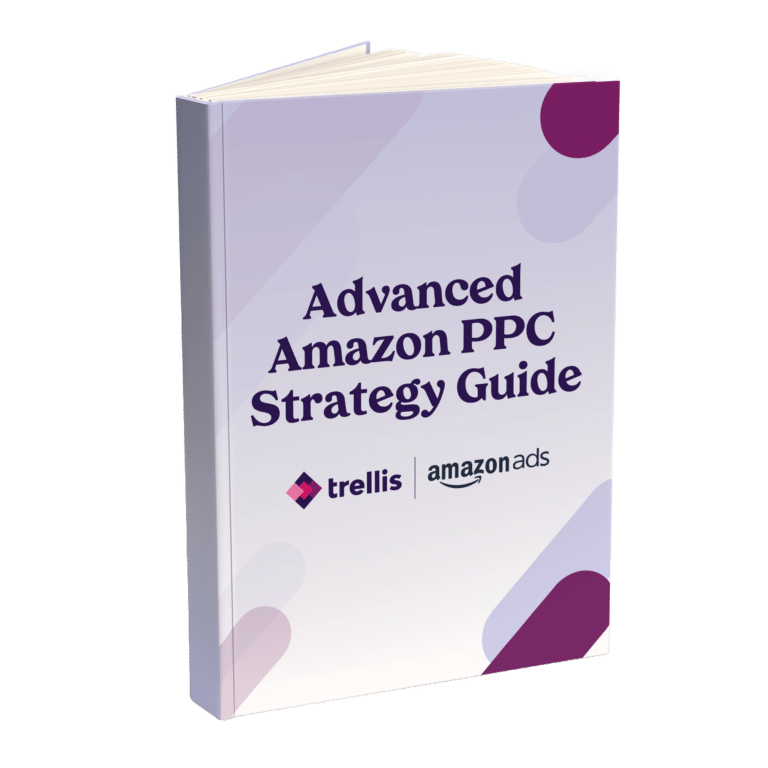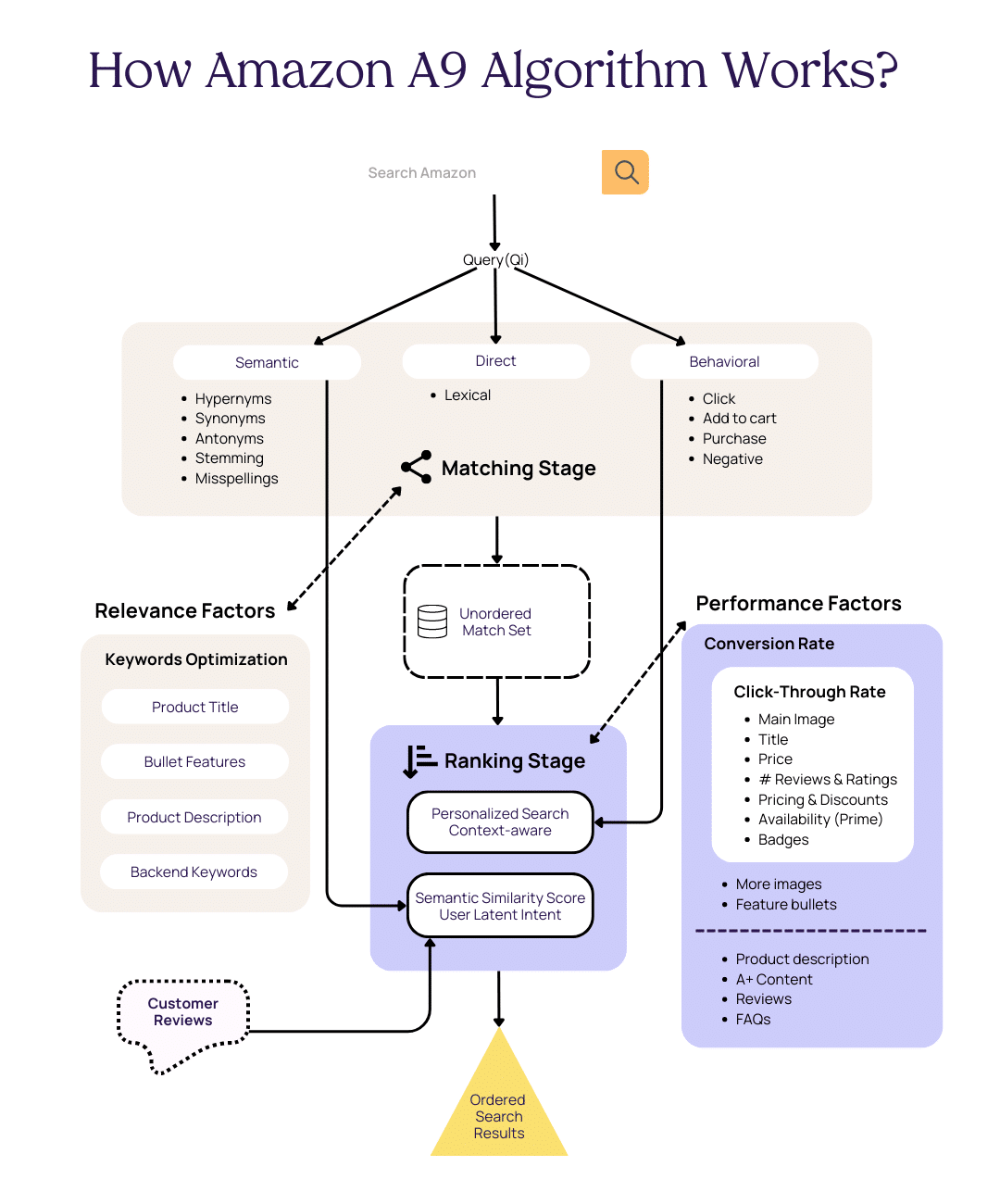While everyone has similar insights into the Amazon ranking factors, getting a deeper understanding of the A9 algorithm can change the way you create product listings.
By knowing how the algorithm works you can find your own tactics to dominate your category. Amazon A9 algorithm is no secret. There are certain ranking factors that are more important than others, but how you use them to your advantage is the most critical differentiator.
Today, you will find out how the Amazon A9 algorithm works, and how to interpret each ranking factor.
What Is A9?
Amazon’s search engine is called A9, developed by A9.com Inc, which used to be an independent search engine for the web. Today, Amazon is developing it every day to give its millions of customers a seamless experience and what they need.
While everyone wants to get to page one, only a few can make it to the top. The Amazon A9 algorithm ranks the products that deserve to be above the fold. Due to the large number of variables, the algorithm is complex, and Amazon is continuously improving it.

Increase Profit Margins By 12%
Implement the 3 advanced PPC strategies that our clients use to sell on Amazon more profitably.
How Amazon A9 Algorithm Works?
Amazon product search typically operates in two stages: matching to identify the products that match the search query, and ranking to sort them.
Here is the workflow when a customer enters a search query:
- A user enters a query in the search bar
- The query passes through a matching engine, which retrieves all products containing words in the query called a match set
- The match set passes through ranking stages, where the top results are sorted through a machine-learned rank function.
- The search engine then displays the most relevant results for the user.

Matching
The matching engine creates a list of products in three ways.
Direct Matching
Products that contain the exact query are the primary candidates. If a search query is ‘wireless gaming mouse’, the results will primarily show products that have the exact search query in the product listing. However, pure lexical matching has problems due to a lack of semantics.
A lexical search looks for exact matches in a database, while a semantic search examines the meaning of words and phrases.
Semantics Matching
While many products have different keywords in their product listings, semantics resolves many search experience problems. The following are some semantic understandings of the Amazon A9 algorithm:
- Hypernyms: Umbrella words such as footwear including shoes, sandals, boots, etc.
- Synonyms: Different words with the same meaning
- Antonymous: Words with opposite meanings
- Stemming: Roots words such as joggers stem from jog.
- Misspellings: 10-15% of queries are misspelled on Amazon
Semantics significantly improves customers’ search experience. However, there is another subset of the matching engine which takes customer feedback to obtain a list of qualified products.
Behavior Data
How customers react to a product listing is a huge indicator of matching the right products with the right search query. If the algorithm sees a pattern in which customers search for ‘type C adapter’, or similar terms, and finds this one product getting the most conversions, that is the ultimate confirmation of matching.
Generally, there are four signals of purchase behavior:
- Clicks on a product based on a search query are a signal
- Added a product to their shopping cart is a stronger signal
- Purchasing a product is the strongest signal
- Viewing and not engaging with the product is a negative signal.
Even with behavioral data, there are issues that the algorithm is trying to solve. For example, a product on page one has a higher chance of being clicked than a product on page 3. If a product is not visible to a customer, it won’t get clicks. Similarly, if it isn’t getting clicks, it won’t be visible.
Therefore, to counter the chicken-egg issue and sort a huge match set, Amazon is working on several models to improve its ranking algorithm.
Ranking
After getting a match for a keyword, algorithms resolve a much more complex problem i.e. sorting the products in order. The algorithm re-runs the behavioral data at the ranking stage through multiple models to give a better customer experience.
User intent signals
The Amazon A9 algorithm improves search results by understanding latent user intent. For instance, a customer won’t necessarily tell the intent of the product they are searching for, therefore, the algorithm trains to interpret the intent of the customer through activity and audience.
Activity defines how the product will be used, while the audience defines the people who will use the product. By appealing to these two elements, you ensure that your products are more likely to rank for relevant searches. If a customer searches for ‘men’s running shoes’, it will find products that have keywords related to the “activity of running, CrossFit, or outdoor running as well as the audience like “men,” and “athletes” for example. Therefore, implementing activity and user-related keywords in your product listing increases your likelihood of higher visibility.
Moreover, Amazon learns about these attributes by looking through Amazon reviews that are not indexed. For example, if the product listing doesn’t have keywords such as CrossFit, and several product reviews mention CrossFit, there is a higher chance of getting visibility on CrossFit related searches. Therefore, using keywords from your customer reviews can give you a stronger ranking.
Products visibility problem
Most new products struggle with minimal visibility in searches and recommendations. To deal with such cold launches, the Amazon A9 algorithm runs Learning-to-Rank (LTR) models. These models take signals from two sets of data, prior values and posterior values.
A prior value represents initial predictions about the product before it has any data such as search history. Posterior values are ones with some search data. The Amazon A9 algorithm improves product search by making predictions about user preferences based on their search history.
The algorithm uses prior values to represent assumptions about user preferences before any search data is observed. It is then updated based on the search data to obtain posterior values, which are used to make predictions about future search queries. The document shows that Amazon experimented with millions of queries and found that LTR models do bring in impressions and positive engagement to new products.
While LTR models may take time to get visibility to your products, you can expedite the process by automating advertising and promotions your newly launched products.
Read more: Top 10 Amazon PPC Campaign Tips
Context-aware search
To improve searches, the Amazon A9 algorithm leverages feedback through personalized history such as user behavior and brand preferences. While not all customers will have an extensive history, it uses a combination of long-term and short-term interests to create a context-aware model.
Data sets of long-term interests are created through the efficacy of purchase history in personalized product searches. For short-term interests, the algorithm leverages click within a query session throughout the results pages leading to finding its ideal product.
Imagine a high-end luxury bag that gets more clicks because customers want to see more images. It would have a low conversion rate against other lower-priced bags because it is relatively expensive and customers are only window shopping. If the algorithm understands the context that a high-end luxury bag will naturally have a low conversion rate against other bags, it would take the user behavior on the product into consideration and may not take a low conversion rate as a strong negative signal.
Another use case is if a customer has brand preferences through search or purchase history, it would be more likely to show more results of that particular brand. The paper shows that using such context models gives better search results to users, especially for short-term datasets.
As a seller, make sure you identify the context of your product and use keywords that resonate with your target audience. If you sell high-end luxury bags, understand the context of your product against other products on the shelf. Using keywords such as elegant, modern, quality, and exclusive will get you the right audience.
What are the Amazon SEO ranking factors?
Amazon ranking factors can be divided into two categories: relevance and performance.
Amazon analyzes your product listing’s relevance at the matching stage, where the focus is on finding the right keywords. While performance is used at the ranking stage which is more inclined towards leveraging data on how customers engage with your product listing historically.
Both factors interact with each other. If the product listing is less relevant, it won’t perform as it doesn’t match the target audience. For example, a high-performing protein powder product does not match well with baby formula search terms.
Relevance factors
Amazon explores product listings for relevance factors, showing a product when it matches a customer’s search query. Sellers can reverse engineer these factors to influence their products’ relevance.
The Amazon A9 algorithm inspects keywords used throughout a product listing to determine what your product is, what it does, and who it is for.
Amazon considers fields such as:
- Product titles where keywords are considered most relevant,
- Feature bullets to provide additional context to activity and audience variables,
- Product descriptions provide further details or technical specifications, and
- Amazon backend keywords are a good place for unused semantic keywords and common misspellings.
It is imperative to note that Amazon A9 algorithm uses a keyword once for ranking, so keyword stuffing would take up limited keyword real estate and negatively impact readability. You can use a free keyword tool to improve your keyword strategy, or our platform which helps you explore a list of keywords relevant to your product.

Performance factors
Performance factors are based on sales history and other behavioral signals. When a product matches a search query, how it ranks in the search results is heavily dependent on the KPIs; click-through rate and conversion rates.
Click-through rate
Click-through rate is the ratio of clicks to impressions on a listing for a particular search query. A high CTR means more customers are clicking on the product when they appear in the search results. To improve your CTR, make changes to the following elements:
- Product image: Create an enticing image that stands out on the shelf
- Product title: Use the most relevant information about the product.
- Pricing & Discounts: Stand out with competitive pricing or promotional tags
- Number of reviews & ratings: Aim for positive engagement through quality products.
- Availability: Get FBA for fast delivery and other Prime perks
- Amazon badges: Strive for the best seller, Amazon’s choice, or climate-friendly tags
Out of the list above, sellers have direct control over the product image, title, price, discounts, and availability. So, use your eye-catching visuals, targeted keywords, and competitive pricing to get clicks. This is where the SEO opportunity starts for your products and moves toward the product details page.
Conversion rate
Conversion rate is the ratio of conversions to product page views. A high conversion rate tells the A9 algorithm that customers are finding what they are looking for. A low conversion rate would mean that the customers were not satisfied with the content being unconvincing, not enough, or not relevant to solve their problem.
Conversion rate is the biggest ranking signal for Amazon. Sometimes it can be hard to identify why your conversion rate is low as there are several components on the product details page that could make a difference.
Above the fold, you have more images to show different photography angles of your product, feature bullets that list everything your product does, and the displayed results page.
Customers are more likely to buy the product if they scroll down below the fold. It shows they are interested and looking for more information such as:
- Product description: Get more product specifications customers might be looking for
- A+ Content: Design graphics to showcase products in a more appealing way.
- Product reviews: Gather as many reviews to get solid social proofing
- FAQs: Answer customer questions to remove any purchase hesitations
If a customer hits add-to-cart or purchases the product, it gives a strong signal to Amazon about the relevance of the product matched to the search query.
The ultimate platform for organic ranking
Amazon SEO is challenging but with the right tools you can identify where the gaps are in your product details page and the sales funnel.
Trellis provides a complete solution with the Content Module which is based on the Amazon A9 algorithm. Through Searchability and Buyability features, our dashboard reflects the two matching and ranking stages.

You can monitor and track the score of your product listings in real time and find valuable insights. Book a demo today to learn how to optimize your product listing through Trellis Content Module.

Increase Profit Margins By 12%
Implement the 3 advanced PPC strategies that our clients use to sell on Amazon more profitably.



